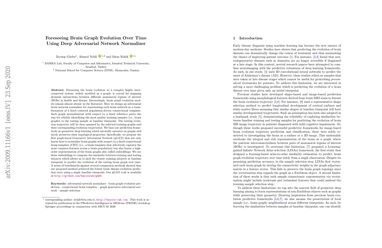Foreseeing Brain Graph Evolution Over Time Using Deep Adversarial Network Normalizer

Foreseeing the brain evolution as a complex highly inter-connected system, widely modeled as a graph, is crucial for mapping dynamic interactions between different anatomical regions of interest (ROIs) in health and disease. Interestingly, brain graph evolution models remain almost absent in the literature...
Here we design an adversarial brain network normalizer for representing each brain network as a transformation of a fixed centered population-driven connectional template. Such graph normalization with respect to a fixed reference paves the way for reliably identifying the most similar training samples (i.e., brain graphs) to the testing sample at baseline timepoint. The testing evolution trajectory will be then spanned by the selected training graphs and their corresponding evolution trajectories. We base our prediction framework on geometric deep learning which naturally operates on graphs and nicely preserves their topological properties. Specifically, we propose the first graph-based Generative Adversarial Network (gGAN) that not only learns how to normalize brain graphs with respect to a fixed connectional brain template (CBT) (i.e., a brain template that selectively captures the most common features across a brain population) but also learns a high-order representation of the brain graphs also called embeddings. We use these embeddings to compute